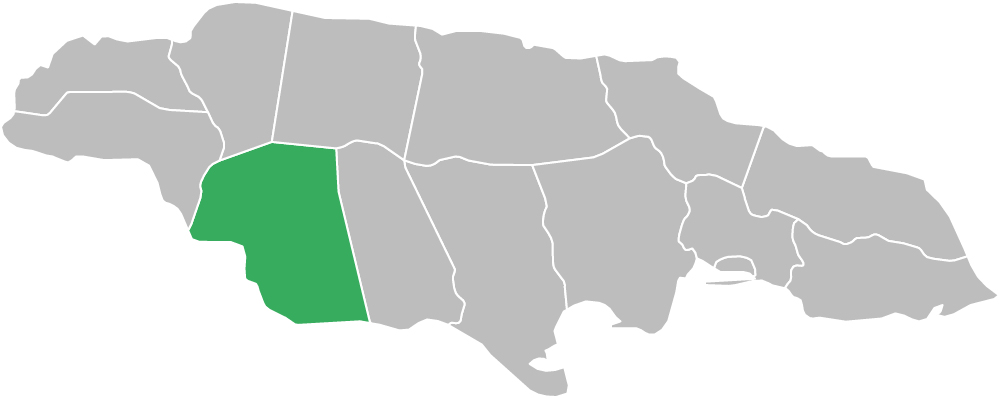
St Elizabeth is a parish in the south-western section of Jamaica. It is located in the county of Cornwall, bordered by St. James and Trelawny to the north, Westmoreland to the west, Manchester to the east and the Caribbean Sea to the south.The north and north-eastern sections are mountainous, while an extensive plain occupies remainder of the parish. The Santa Cruz range of mountains run through this plain from north to south and terminates at the southern extreme with a 1,600 ft precipice.
The parish is administered by one parochial board, the St. Elizabeth Municipal Corporation.
Land Area: 1,210.7 sq km (467.5 sq mi)
Capital Town: Black River
St Elizabeth is one of the oldest parishes in Jamaica. Originally including much of the western section on the island it was split to form parts of Westmoreland and Manchester in 1703 and 1814 respectively. St. Elizabeth was named in honour of Lady Elizabeth Modyford, wife of Sir Thomas Modyford, Governor of Jamaica between 1664 and 1671.
Early settlement in St. Elizabeth began in the Pedro Plains where the Tainos, the first known inhabitants of Jamaica, occupied the coastline and lead a simple life. Though the original Tainos died by the 17th century, persons of Taino descent from Surinam came to settle in the parish in the 18th century and their descendants are there to this day.
When the Spanish were defeated in 1655, the slaves who did not manage to flee to Cuba, retreated to the impenetrable Cockpit Country, which included parts of St. Elizabeth. These fleeing slaves became known the Maroons and, today, St. Elizabeth remains home to the Maroons of Accompong, one of the most famous Maroon towns in Jamaica.
St. Elizabethans also played an instrumental role in the Sam Sharpe Rebellion of 1831. It is documented that about 20 to 40 percent of the slave population fought in that uprising. This little town of Black River, now the parish capital, can boast its popularity in the 19th and early 20th centuries as a fishing spot, colourful balls and banquets – often held at ‘Court-house’ and its annual circus that attracted visitors from far and wide.
Black River in St Elizabeth is among the oldest towns in the island, is reportedly the first to have received electricity. The Leydens brothers were among the earliest settlers in the parish, and they are said to have imported Jamaica’s first motorcar.
Though the social scene has changed significantly, the parish has forged ahead in agricultural production, providing the bulk of Jamaica’s vegetable and fruit provisions. The Black River supports an important shrimp and freshwater fishery. And best of all, St. Elizabeth’s diverse geographical patterns make for a landscape as rich and varied as the heritage of its people.
The Cockpit Country is a large area in west-central Jamaica that derives its name from the ‘cockpit’ krsat limestone which has the appearance of an overturned egg-tray. This area measures approximately 450 km2 and though centred in the parish of Trelawny, has extensions into St. Elizabeth. The vegetation is also the largest and most intact example of wet limestone forest in Jamaica. Its flora exemplifies the outstanding endemism of the West Indies and, most of Jamaica’s 550 native ferns grow in this area.
